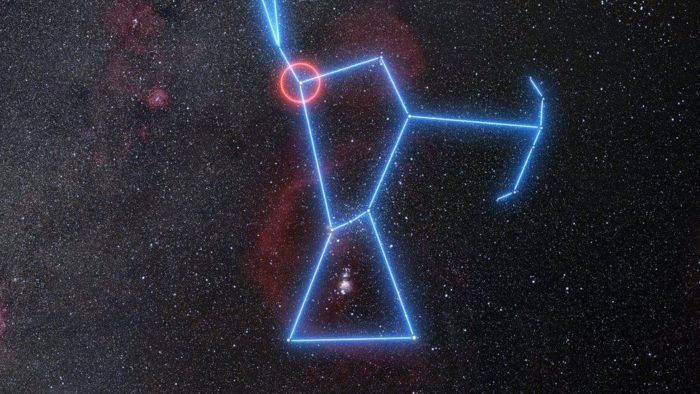Jun 17 2021
Betelgeuse Mystery Solved
 In 2019 and 2020 the red supergiant star Betelgeuse was dimming, and by a significant amount. Betelgeuse is the right shoulder of the constellation Orion and so is one of the easier stars to find. As a red supergiant it is also in the later stages of it’s life. Such start might dim like this when they are getting close to going supernova, and so that possibility was excitedly proposed. Not only would it be incredibly cool to see a supernova that close by – it would be visible during the day for weeks, or light up the night sky – but the opportunity to study a supernova close up (just 724 light years away) like that would be a scientific boon. But astronomers were too cautious to jump to conclusions, and therefore explored other options as well.
In 2019 and 2020 the red supergiant star Betelgeuse was dimming, and by a significant amount. Betelgeuse is the right shoulder of the constellation Orion and so is one of the easier stars to find. As a red supergiant it is also in the later stages of it’s life. Such start might dim like this when they are getting close to going supernova, and so that possibility was excitedly proposed. Not only would it be incredibly cool to see a supernova that close by – it would be visible during the day for weeks, or light up the night sky – but the opportunity to study a supernova close up (just 724 light years away) like that would be a scientific boon. But astronomers were too cautious to jump to conclusions, and therefore explored other options as well.
It didn’t take long before the evidence started pointing in a different direction. First, the star started to brighten again, which would not happen if it were about to go kablooi. Betelgeuse, it seems, is not in its final stage, ready to collapse and explode, and likely still has tens of thousands of years of life left. The dimming was likely due to a large dust cloud. But that would be unprecedented, and astronomers had not ready explanation for why a dust cloud would suddenly obscure such a large star to such a degree. Now a new study may have solved the mystery, thanks to high resolution observations of the star. They report:
Here we report high-angular-resolution observations showing that the southern hemisphere of Betelgeuse was ten times darker than usual in the visible spectrum during its Great Dimming. Observations and modelling support a scenario in which a dust clump formed recently in the vicinity of the star, owing to a local temperature decrease in a cool patch that appeared on the photosphere.
Essentially, a cold patch appeared on the surface of Betelgeuse. That cold patch itself would have caused some dimming, but not as much as was observed. As study co-author Emily Cannon told BBC news:
“Our overall idea is that there was a cool spot on the star which, because of the local drop in temperature, then caused gas ejected previously to condense into dust,”
That dust obscured the star resulting in further dimming.
It amazes me still how much information if available when we look out into the universe, as long as we know how to detect and analyze it. Astronomers are finding many new ways to do so, and our instruments are improving as well. Not too long ago and entire new field of astronomy, gravitational wave astronomy, came into existence. As much as we have pieced together about how the universe works so far, there is still so much to learn that we keep finding and solving new mysteries. Also, the universe is a big place, so even extremely rare events will be happening somewhere out there for us to see.
Tracking the light curves of stars is also a fairly recent form of astronomical observation. This is being done largely to look for planets as they cross between us and the star being observed. But even though that is why we are tracking light curves, that does not mean that is the only thing we are going to observe. Remember Tabby’s Star? This is another star with a strange pattern of dimming, although this one following a different pattern than Betelgeuse. Tabby’s star was dimming much more than we have previously observed any star to dim, and it was doing so in an apparently chaotic way. It was as if there was a swarm of something orbiting the star and intermittently blocking the light. This immediately led to speculation about Dyson swarms or some other alien technology in orbit around the star. But it turns out it was – dust.
We’ll probably find more stars with strange light curves giving us clues to new astronomical phenomena. Perhaps one day it will turn out to be the most interesting possibility – alien technosignatures, or a rare event like a supernova. But we’ll probably have to wade through a lot of more mundane dusty explanations to find the more exciting ones. It’s all good though. Every time we find and solve one of these small mysteries it incrementally increases our knowledge of the universe.






